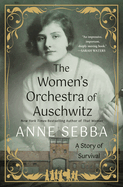
In The Women's Orchestra of Auschwitz, British biographer and journalist Anne Sebba presents a powerful and profoundly disturbing account of a small group of musicians who survived the Nazi death camp by performing for their lives.
There were several orchestras at Auschwitz, in keeping with the Nazi penchant for using music as a particular form of torture by, for example, making musician prisoners play marching tunes while new arrivals were led directly to the crematoria. There was, however, only one entirely female orchestra at Auschwitz-Birkenau. It was formed in April 1943 by the sadistic guard Maria Mandl, known as "The Beast," as a way to compete with her male counterparts. At first a ragtag group, the orchestra came together under Alma Rosé, a virtuoso violinist and niece of Gustav Mahler. Rosé, who led the orchestra for 10 months until her sudden death in April 1944, was an unrelenting taskmaster and often insulted players who couldn't keep up, but the women knew that, outside of the orchestra, they were doomed. "The orchestra," Rosé told them, "means life."
Sebba's research is deep and meticulous, and it includes interviews she conducted with two members of the orchestra, Hilde Grünbaum (now deceased) and Anita Lasker (age 100). What truly elevates this book, however, is Sebba's refusal to soften the horrors endured by the musicians, along with millions of others. The Women's Orchestra of Auschwitz is a stark reminder of the cruelty humans are capable of inflicting upon one another. --Debra Ginsberg, author and freelance editor

